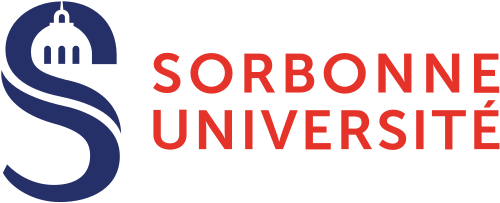Nathanaël Jarrassé will defend his Habilitation to Supervise Research on thursday, March 24 at 9:30 am, in amphitheater 55A on the Pierre and Marie Curie Campus of Sorbonne University.
Title of the work: “On the use of sensorimotor coordinations for intuitive and ecological robotic assistance to gesture“.
The composition of the jury is as follows:
- Christine CHEVALLEREAU, Professor, LS2N – Centrale Nantes, Examiner ;
- Philippe FRAISSE, Professor, LIRMM – University of Montpellier, Examiner ;
- Vanda LUENGO, Professor, LIP6 – Sorbonne University, Examiner ;
- Renaud RONSSE, Professor, Catholic University of Louvain, Reporter ;
- Philippe SOUERES, Research Director, LAAS – CNRS, Reporter ;
- Jean-Louis VERCHER, Research Director, ISM – Aix-Marseille University, Reporter.
Summary:
The field of robotics for gesture assistance is booming, whether it is to assist the gesture of a person in a sensory-motor handicap situation or of an industrial operator. Despite the important progress made in the last decades on the hardware of these robotic devices, offering users an intuitive and ecological control of their body assisted by these devices still represents a major challenge. In this talk, we will present the research conducted on :
- the characterization of natural motor coordinations and their reorganization caused by a disability or by interaction with robots;
- the use of this knowledge to develop a better control of rehabilitation and assistance robots;
- and on the interdisciplinary approach that guides this research.
Nathanaël Jarrassé’s research focuses on the development of innovative interactive robotic devices for neuromotor rehabilitation and gesture assistance. These devices have the particularity of integrating knowledge from more fundamental research on the understanding and modeling of sensorimotor control and physical human-robot interaction. This project is implemented at ISIR within the AGATHE team. It is based in particular on :
- the design, development and exploitation of interactive robotic systems, sensors and metrics to study, model and characterize the human sensorimotor system (healthy and pathological) and its adaptation and learning capacities,
- the use in return of this knowledge obtained to improve devices intended for the assistance and rehabilitation of people with recoverable or non-recoverable loss of motor capacities (prostheses, exoskeletons, rehabilitation robots, etc.).
The domains directly targeted are those of neuromotor rehabilitation (facilitating and maximizing the relearning of “body techniques” with robotic rehabilitation devices) and assistance to the aided gesture, whether for upper limb prostheses or exoskeletons for walking assistance (increasing the control capacities of patients over their technical aids and promoting the corporal integration of these devices).
His research on the physical interaction between man and machine is thus articulated around several research themes:
- the understanding of motor control at the articular level (synergies, articular coordinations, motor compensations),
- the detection and correction or respect of the subject’s or patient’s motor intentions,
- the facilitation of control and integration by the subject or patient of the control device (in his body diagram for example),
- optimizing the learning of motor strategies with robotic devices.
In parallel to these engineering researches, Nathanaël Jarrassé is interested in the ethical, legal and societal issues (ELS) of medical robotics and particularly those intended for assistance such as:
- the characterization of socio-anthropological, psycho-perceptual and cultural phenomena involved in the use of technical objects;
- the analysis of the ethical questions and stakes around these devices of assistance;
or the reflection on the challenges of communication and technoscientific ideologies.
The objective of this global and interdisciplinary approach is to understand the question of the human-technical aid(s) relationship as a whole, in order to develop useful, usable and acceptable devices, and to promote their appropriation.
Referent contact : Nathanaël Jarréssé, CNRS Research Officer



